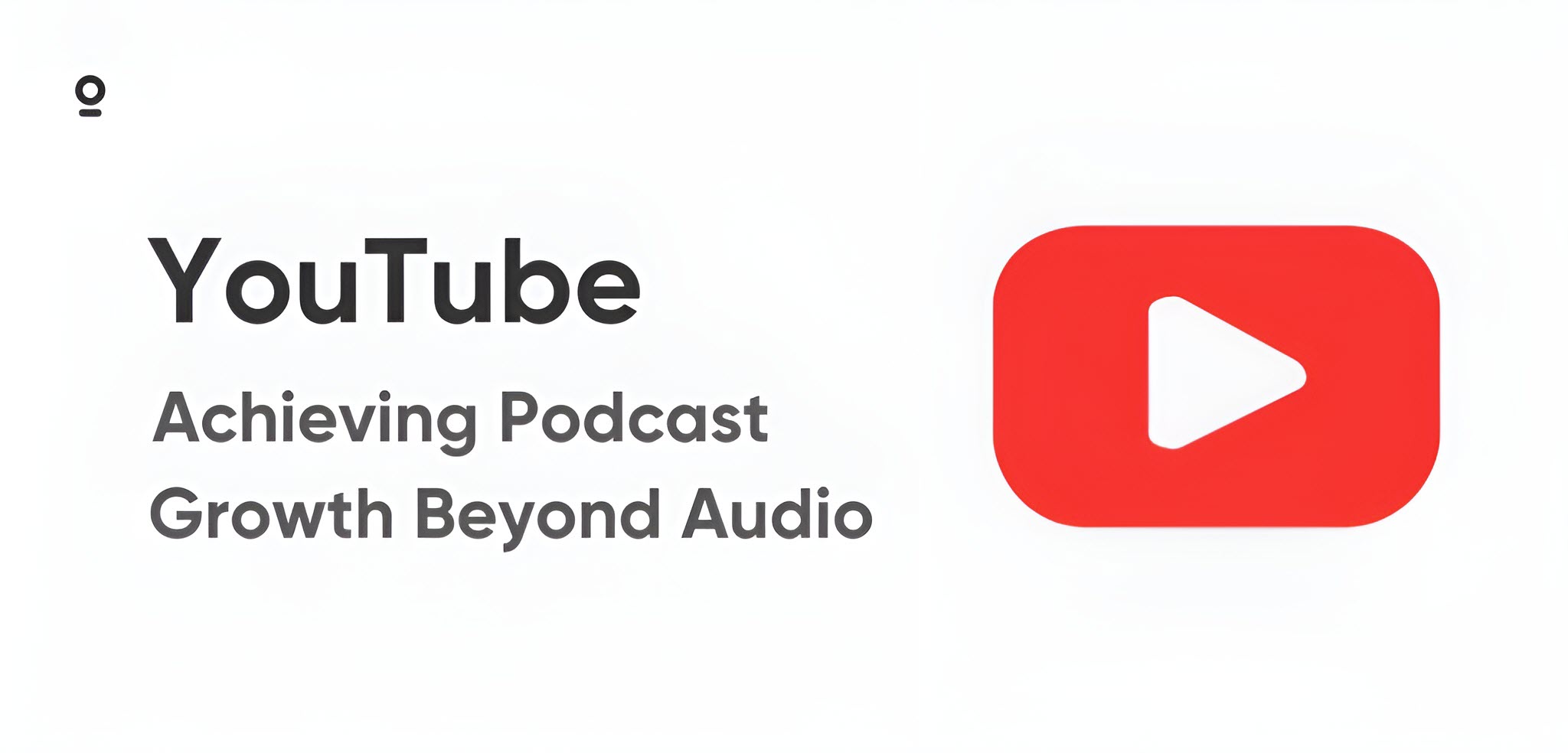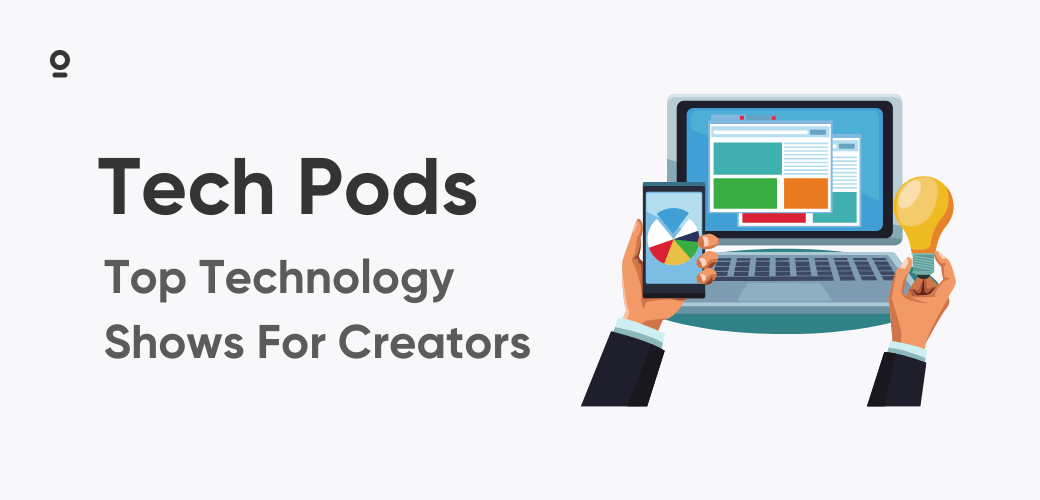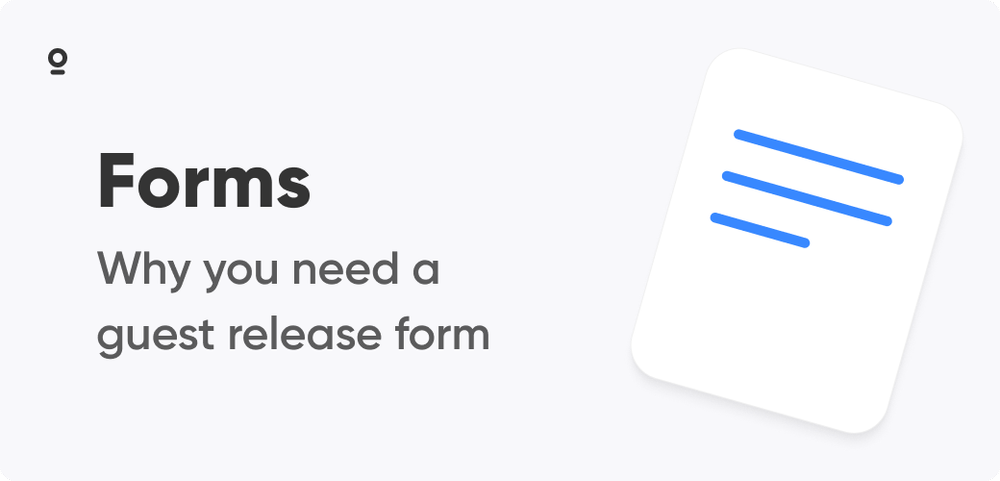Ever notice how much easier it is to sit through a three-hour podcast when you can actually see the people talking? It's no accident that YouTube has become podcast central these days. People flat-out prefer watching conversations to just hearing them.
Getting your podcast looking decent on YouTube doesn't require film school training or gear that costs more than your car. You need some basic lighting that doesn't make you look like you're in a hostage video, a background that isn't your unmade bed, and a camera that won't make viewers squint wondering if they need glasses.
The top podcasts on YouTube aren't sitting in million-dollar studios. Well, some are now - but they didn't start that way. Joe Rogan recorded in his living room for years. Most successful shows started with basic setups and focused on consistent content first. The fancy gear came later.
Here's what's crazy - only about 17% of podcasters currently record video. That's it. Despite massive audience demand for visual content, most podcasters are still audio-only. Talk about opportunity.
The YouTube Podcasting Landscape
The stats don't lie. Roughly a third of weekly podcast listeners now use YouTube as their main podcast platform. That's more than Spotify and Apple combined. Not bad for a site that wasn't even designed for podcasts.
What makes YouTube work so well for podcasts? A few things. The search function helps new listeners find you. The comment section builds community. And you can monetize from day one instead of waiting to hit some arbitrary download threshold.
This shift to video is happening faster than most people realize. Back in 2022, about 28% of US podcast listeners preferred watching rather than just listening. By late 2024, that number jumped to 40%. That's a massive shift in just two years.
YouTube's clearly noticed. They've been quietly adding podcast-specific features and a dedicated "Podcasts" section to make discovery easier. They're investing in this category because they see where things are heading.
For creators, this shift presents a major opportunity. The audience is already on the platform. The infrastructure supports what you're doing. And video gives you more ways to connect with viewers than audio alone ever could.
Top Podcasts on YouTube & What Makes Them Successful
Let's break down what's working for the current chart-toppers. According to the latest rankings, these are among the top 10 most viewed podcasts on YouTube in the United States.
1. The Joe Rogan Experience
The Joe Rogan Experience remains the king of top podcasts on YouTube. His clips still pull massive numbers despite the Spotify exclusivity deal. His Trump interview in 2024 hit 56 million views. Not too shabby.
What works about Rogan's setup? It's pretty basic. Good cameras capturing unfiltered conversations that often run three hours plus. No fancy graphics or distracting elements - just people talking with plenty of room to go deep on topics. The visual component lets viewers catch subtle reactions and moments that would be lost in audio-only.
2. Rotten Mango
Stephanie Soo took true crime podcasting and made it visual in a way that just works. The format makes viewers feel like they're solving mysteries alongside her.
Soo's facial expressions and visual presentation style make complex cases easier to follow. She uses visuals strategically - not just slapping a camera on an existing audio show. It's built for the format from the ground up.
3. 48 Hours
CBS took their established TV brand and adapted it for YouTube brilliantly. They understood that their investigative approach needed visual elements to work properly.
What stands out is how they use graphics and footage to make complicated cases clear. Evidence, timelines, locations - all these elements become much more understandable when you can see them. Their success proves that visual elements aren't just decoration - they can improve comprehension.
4. The MeidasTouch Podcast
Three brothers with different expertise areas (law, video editing, advertising) bring complementary skills to break down complex political topics. Their chemistry feels genuine.
Their multi-camera setup captures natural interactions, helping viewers feel like they're sitting at the table with them. They didn't overthink the format - they just made sure to capture what makes their conversations engaging.
5. Smosh Reads Reddit Stories
This format works because the whole point is seeing people react to bizarre internet content. The hosts' facial expressions are half the entertainment.
Their production focuses on capturing authentic reactions rather than scripted content. Multiple camera angles keep things visually interesting without being distracting. It's a perfect example of content that wouldn't work without the visual element.
6. CLUB SHAY SHAY
Shannon Sharpe brings insider access to sports conversations. As a former NFL player, he gets candid moments from guests that other hosts simply can't access.
His studio feels like a hangout spot, not a formal interview set. That relaxed vibe encourages candid conversations. The cameras just happen to be there capturing it all. Viewers feel like they're eavesdropping on real talk rather than watching a performance.
7. The Pat McAfee Show Live
Pat McAfee turned his post-NFL career into a daily sports show that blends analysis with genuine friendship chemistry. His multi-camera setup captures both serious takes and natural humor.
What works about his approach is how the cameras reinforce the show's energy. When McAfee gets fired up about a topic (which happens often), seeing his passion adds a dimension that audio alone would miss.
8. This Past Weekend with Theo Von
Comedian Theo Von brings his unique storytelling and perspective to long-form conversations. His distinctive style would work in any format, but video enhances what makes him special.
Von's mannerisms and expressions add essential context to his sometimes abstract observations. The camera setup is simple but effective - focused on capturing genuine moments rather than creating a polished product.
9. Murder, Mystery & Makeup
Bailey Sarian pioneered a format that shouldn't work but absolutely does - applying makeup while discussing true crime cases. It's a combination that built an audience across two entirely different interest areas.
The visual component isn't just helpful here - it's the entire concept. Watching the transformation while listening to the story creates a unique viewing experience that simply couldn't exist in audio-only format.
10. H3 Show
Ethan and Hila Klein built the H3 Show from an existing YouTube following, creating a community around their conversational format. Their multi-camera setup captures hosts and guests effectively.
They publish consistently and engage actively with their community - two practices that reinforce viewer loyalty. The visual component helps viewers feel connected to hosts they've watched for years.
The Role of Video Quality & Equipment
Video quality matters, but not in the way most new podcasters think. You don't need Hollywood-level production to create watchable content. You need enough quality that viewers focus on what you're saying rather than technical problems.
Finding the best camera for YouTube podcasting means balancing quality, budget, and simplicity. Let's break down what actually works.
Why Video Quality Matters
Viewers form snap judgments about content. If your video looks like it was shot on a potato, they'll bounce before hearing a word you say. Those judgments happen within seconds.
Good video removes distractions. When lighting is decent and the image is clear, viewers can focus on your content rather than squinting through visual problems. This leads to better retention, which YouTube's algorithm rewards with more exposure.
The good news? "Good enough" video quality is surprisingly affordable these days. Many top shows started with basic setups and upgraded as they grew. Progress beats perfection every time.
Camera Options That Won't Break You
Here are the main camera options to consider for your YouTube podcast:
DSLR Cameras
- Give you that nice depth of field effect where you're in focus but the background is softly blurred
- Canon EOS Rebel T7 will run you about $480 and delivers great quality
- Take up more space and come with steeper learning curves
- Offer room to grow with various lenses and settings
Mirrorless Cameras
- Deliver DSLR-quality images in smaller packages
- Sony a6400 costs around $900 but works great for video
- Cost more than entry-level DSLRs
- Hit a sweet spot of quality and usability for many podcasters
Webcams
- The simplest, most affordable option
- Logitech C920s Pro HD costs about $70 and works surprisingly well
- Set up in minutes with minimal technical headaches
- Look perfectly fine when paired with decent lighting
Here's the truth: many successful podcasts started with webcams or even phone cameras before upgrading. The best camera for YouTube is often the one that lets you start creating consistently without getting bogged down in technical details.
The Other Stuff That Actually Matters
Your camera is just one piece of the puzzle. These other elements often make a bigger difference:
- Lighting trumps camera quality every time. A $40 ring light will improve your video more than spending hundreds extra on a fancier camera.
- Audio quality still rules. Good video with bad audio makes for unwatchable content. Period.
- Background affects viewer impressions. Keep it clean and intentional, even if it's simple.
- Camera placement matters more than most people realize. Eye-level positioning typically looks most natural.
These elements work together to create your overall video presence. Getting them right often matters more than having expensive gear.
Real-World Tips For YouTube Podcasting Success
If you're looking to start or improve a podcast on YouTube, focus on these practical approaches:
Find your specific angle
- What topic do you know well that others would find valuable?
- Who specifically are you creating for?
- What unique perspective can you bring that feels different from existing shows?
Start with equipment you can actually handle
- The best camera for YouTube is one you'll use consistently
- Good lighting improves any camera's output dramatically
- Focus on creating regular content rather than perfect technical quality
Build a sustainable routine
- Figure out how often you can realistically publish and stick to it
- Let viewers know when to expect new episodes
- Record multiple episodes when possible to build a buffer for busy weeks
Use YouTube features effectively
- Create titles that balance search visibility with clarity
- Design thumbnails that stand out without looking clickbaity
- Add timestamps to longer episodes for viewer convenience
Connect with your audience
- Respond to thoughtful comments when possible
- Ask specific questions that encourage meaningful feedback
- Build community around your content rather than just broadcasting
Every successful podcast on YouTube started somewhere. Focus on consistent improvement rather than perfection from day one.
Looking Ahead With YouTube Podcasting
YouTube offers podcasters a massive opportunity to reach new audiences. The top podcasts on YouTube prove that the visual element creates stronger connections with viewers, and the platform's reach extends far beyond traditional podcast listeners.
Finding what works for your show takes time and experimentation. Study what successful podcasts do, but adapt those lessons to fit your content and style. The best camera for YouTube podcasting depends on your budget, technical comfort, and specific needs.
Most importantly, focus on creating consistently. Many top shows started with basic setups and improved gradually. As your audience grows, you can invest in better gear that makes sense for your format.
Building an audience takes patience, but the combination of valuable content and decent production quality is what keeps viewers coming back. Start where you are, use what you have, and keep getting better with each episode.







